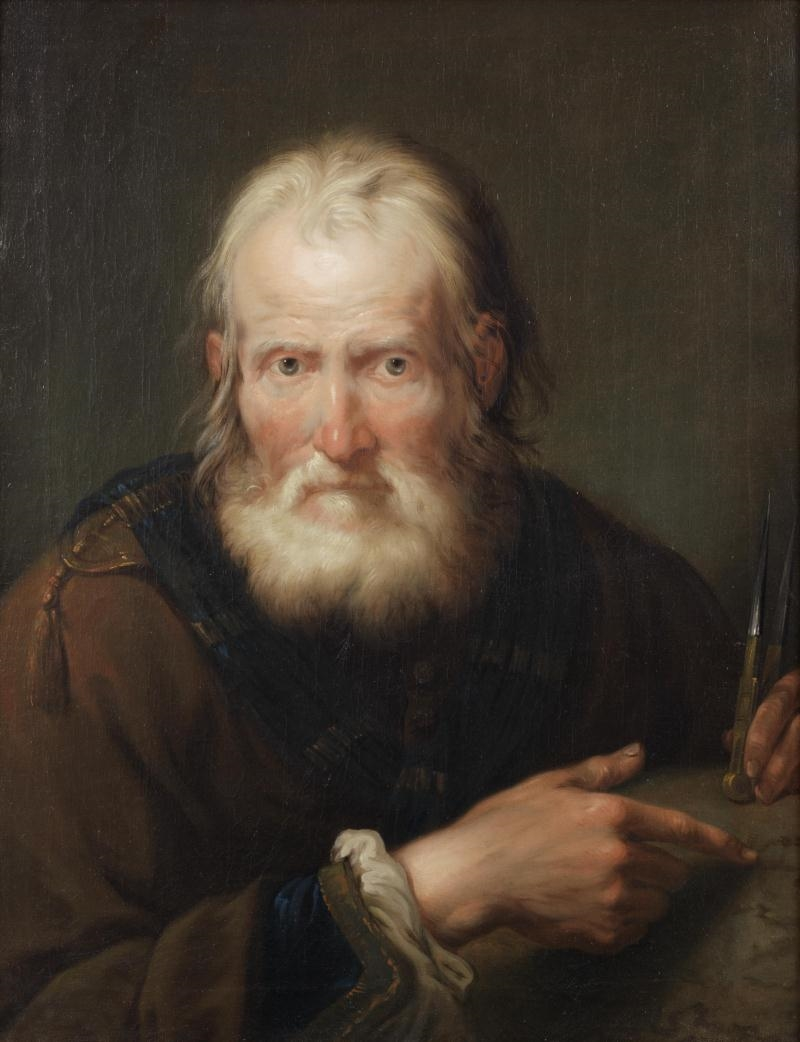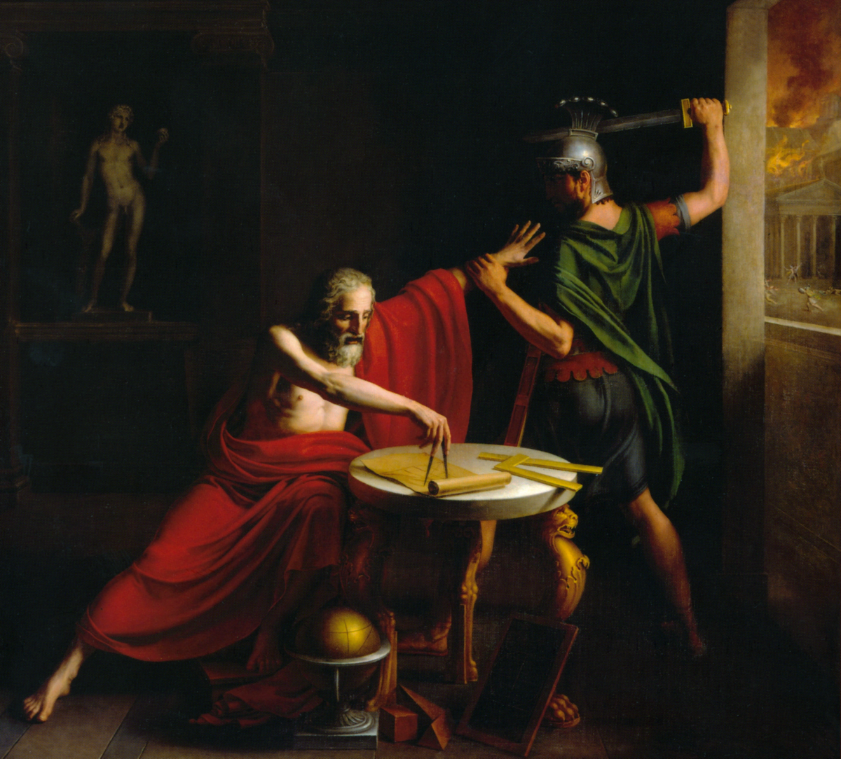A great scientist, physician, mathematician, and engineer of ancient Greece - Archimedes utilized maths in order to explain the mechanics of daily life. He contributed a number of revolutionary tools.
Alongside the likes Newton, Pythagoras, Thales, Descartes, Einstein and others - Archimedes finds a place amongst the some of the great mathematicians and scientists in the history of the mathematical world. Let’s delve into the remarkable achievements of Archimedes and explore how his work continues to resonate in the field of mathematics.

Who Is Archimedes?
Like many scientists of antiquity, the life of Archimedes of Syracuse was not well documented. There is no biography that was written by him and, in fact, only a couple of written texts have been found about the mathematician - a common problem for historians studying this era.

What we do know comes mainly from the writings of Isadore of Miletus, who discussed him in approximately 530 BCE. Some other scholars that mentioned the life of Archimedes range from Polybius (202-126 BCE), Plutarch (46-125BCE) and Livy (59-17BCE). It is estimated that Archimedes was born in Syracuse in 287 BCE.
With an astronomer for a father, Archimedes began to take an interest in and study sciences from a young age. According to texts documenting some exchanges that Archimedes had with certain professors, historians were able to glean that he continued his studies at the reputable School of Alexandria.
It was there that he rubbed shoulders with the most well-known sages of the era, most notably Dositheus, Conon of Samos and also the director of the library of Alexandria, Eratosthenes. It was to this audience of distinguished academics, and to the academics later inspired by these works, that Archimedes intended his scientific books.
Later in life, Archimedes became an engineer for the king of Syracuse, Hiero II.He participated, therefore, in the defense of the city during the Second Punic War. Legend has it that Archimedes was killed in 212 BCE by a Roman soldier who had specifically been ordered not to execute him.
Archimedes and his seminal works made an important mark not only on his era but also the generations to come. In other words, it was not only the great sages of his epoque that admired him, but he also inspired many other academics in the future. These great academics include Cicero, Plutarch and even Leonardo de Vinci. Archimedes’ influence even extends to language.
The word “Eureka” was made popular by Archimedes, who it is said cried it out in the street to celebrate one of his major discoveries. The word eureka translates into “I have found,” which explains why so many of us have uttered it after having found an object or idea we thought we had lost. This alone is proof that Archimedes’ influence has traversed the ages.
For more mathematicians from antiquity, check out the infamous Pythagoras! Now that we've learned a bit more about this revolutionary thinker, let's uncover some of his most influential discoveries:
Archimedes' Principles of Buoyancy
Any body that is submerged, either completely or partially, in a fluid at rest is subjected to an upward force. The magnitude of this buoyant force is equal to the weight of the fluid that the body has displaced.
Archimedes
Archimedes’ principle, discovered while he was in a bath, is a cornerstone of fluid mechanics. It states that an object submerged in a fluid experiences an upward force equal to the weight of the fluid it displaces. This principle not only revolutionized our understanding of buoyancy but also provided a method for determining the purity of metals, such as the famous story of Archimedes and the golden crown.
Explaining this principle, Archimedes noted the behaviour of solids submerged in fluid. According to Virtruve, Archimedes studied the behaviour of water by taking a bath himself. The flotation principle is then the principle that describes the force subjected onto a solid body by gravity when it is submerged in either a liquid or gas. This force is explained by Archimedes by the augmentation of the pressure of liquid in the object. This pressure is physically more strong on the base of the submerged body than on the top, which causes the body to float because of this uneven force. Archimedes’ principle is defined as:
Discover the best maths tutors in the UK here.
Innovations in Geometry
Archimedes made significant advances in geometry, particularly with his work on the area and volume of geometric shapes. His method for approximating the value of π (pi) by inscribing and circumscribing polygons around a circle was groundbreaking. Archimedes' approximations of π were remarkably accurate for his time and laid the groundwork for future calculations.
Archimedes determined one of the earliest accurate approximations of pi, using the fraction 22/7 as an upper bound, a value still utilized today. He also derived exact formulas for calculating the volume and surface area of a sphere. Additionally, Archimedes demonstrated how exponents could represent large numbers more efficiently.

The Method of Exhaustion
The Method of Exhaustion Archimedes built upon the works of Eudoxus of Cnidus, which discussed how the method of exhaustion can be utilized in order to succeed in calculating the area found under a parabola. This permitted him to continue to expand upon his reflections on conic shapes, as well as calculate areas that were considered impossible to calculate before. The Number Pi Archimedes is particularly known to have calculated pi to incredible precision. To perform his calculations, the mathematician utilized regular polygons and combined this to calculate the relationship between the perimeter of a circle and its diameter. It was using this method that he was able to find the number that approached the number pi as we know today (3.14159).
The Archimedean Screw
Archimedes also invented the Archimedean screw, a device used for raising water from lower to higher levels. This simple yet effective machine has been employed in agriculture and drainage systems for centuries, showcasing Archimedes’ ingenuity in practical applications of mathematical principles.

Check for Maths tutor in Southampton here on Superprof.
Archimedes' Advancements in Mechanics
Archimedes took a special interest in studying the function of machines and, in fact, is widely recognized as the father of static mechanics. At first, he studied the functioning of both the lever and centre of gravity, investigations which would later play a major role in his work “On the Equilibrium of Planes.” It was because of this work that Archimedes declares famously: “Give me a place to stand on and I will move the earth.” Archimedes wrote many other works relating to the principles of the mechanisms of the lever.
Through these, he discovered that weight should be in equilibrium of each side of an object in order for the center of gravity to be in complete balance. The mathematician is also credited as providing the first investigations on machines using traction. One example is his implementation of the system of the pulley, which helped the ancient Greeks lift heavier objects.
However, it is another, more powerful invention that is credited to the accomplished mathematician: the screw. Inspired by his discoveries in Egypt, Archimedes created the screw in order to help people lift water from rivers. Another one of Archimedes’ inventions, the “Antikythera mechanism,” permitted humans to be able to predict the dates and hours of eclipses.
Some parts of this machine are visible at the National Archaeological Museum in Athens. For Archimedes, all of his mechanical inventions and academic investigations were not just distractions or entertainment. His discoveries were mostly a product of the commands to protect the city of Syracuse, and his creative spirit.
Archimedes' Mathematical Rigour and Proofs

The Spiral of Archimedes The mathematician studied the composition of the spiral. After many calculations, he therein deduced that the area of the spiral was equivalent to the radius of the circle that continued it. He also used the tangent to establish an equation of the circle (one segment where the length is equal to the circumference of the given circle).
Archimedes’ approach to mathematics was characterized by rigorous proofs and logical reasoning. His treatises, such as "On the Sphere and Cylinder" and "On the Measurement of a Circle," employed methodical proofs to validate his findings. This emphasis on proof laid the foundation for modern mathematical rigour and has influenced the methodologies used by mathematicians through the ages.
The scientist made it a priority to calculate the areas and volumes of different objects. He utilised most notably his knowledge of mechanics in order to apply them to math. The study of areas and volumes of the sphere and the cylinder were so important to him that he even asked that the figures be inscribed onto his gravestone!
Archimedes' Influence on Mathematics Today
Arithmetic, geometry, reasoning, mathematics, equations, prime numbers, algebra, differential calculus, integral calculus, decimals, pi, right triangle, complex numbers – all of the history of math was marked by the advances made by Archimedes.
Mathematics courses at the starting level of high school can thank the celebrated Archimedes – as he has formed the basis of much of the maths or physics curriculum. Interested in learning more about the origin of other great ideas? Make sure to check out other famous mathematicians throughout history, like Thales and Sir Isaac Newton.
Find the best Maths tutor here on Superprof.
















This was an insightful read. His contributions to the field of mathematics helped shaped many businesses today including my own personal tax advisory UK business.